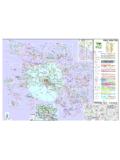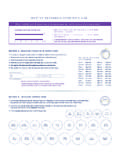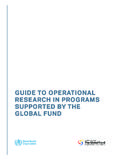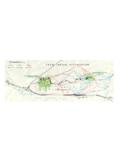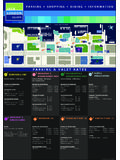Transcription of S E P T E M B E R 2 0 1 3 Health System Navigators: Band ...
1 Health System navigators : band -Aid or Cure?A PRIMER WITH REFLECTIONS FROM THE CHANGE FOUNDATION S PANORAMA PANELSEPT E M B E R 2 0 1 32 The Change Foundation Health System navigators : band -Aid or Cure?AcknowledgementsThe Change Foundation s unique and abiding partnership with our PANORAMA panel serves as a model of community engagement. It also deepens and enriches our work. PANORAMA is a panel of more than 30 Ontario patients and caregivers who are drawing on their own experiences good and bad of moving across the healthcare System , to help improve everyone else Change Foundation acknowledges and thanks each PANORAMA panelist for inspiring and informing us. Their stories, ideas and wisdom help our thinking evolve on how to advance a patient-centred healthcare System in Ontario. About this ReportThis is the first in a series of PANORAMA reports presenting the diverse and collective views of The Change Foundation s standing panel, along with the Foundation s own analysis on game-changing ideas to advance a patient-centred healthcare System in Ontario.
2 We hope these reports, integrating the frequent, lived healthcare realities of more than 30 Ontario patients and caregivers, will spark meaningful public policy discussion and inform System -level change. What s PANORAMA?PANORAMA is a standing panel of more than 30 Ontario residents exchanging views, experiences and advice to help The Change Foundation in its work to improve the patient / caregiver experience. The panel is reflective of a growing proportion of Ontario s population who are living with chronic Health conditions or providing care for someone who The Change Foundation Health System navigators : band -Aid or Cure? I got a list of referrals for surgeons from my doctor, but didn t know how to decide what is best, how the surgery will affect my life, how long rehab will take or where I can get rehab. People are so very individual and circumstances are unique to each of us, so I fear that the desire for one model to act as a template for all navigation will work poorly.
3 Can all possibilities be anticipated? Most people have adequate caregivers in friends and family, and for them a navigator would be unnecessary and prohibitively expensive for the System , and may even be an annoyance. The navigator should concentrate on the small group that really does need help, to keep costs from getting out of hand, but also not to spend a lot of effort needlessly. PANORAMA panel members4 The Change Foundation Health System navigators : band -Aid or Cure?Of late, increasing emphasis is being placed on what is called Health System navigation. In the current Ontario context, the focus is on navigation at points of transition, as patients move from one provider to another. This is generally thought to mean movement between unconnected organizations or providers (although transitions within the same care team under one roof can sometimes prove just as difficult).
4 A potential policy fix that is currently being developed is the introduction of Health System navigators , sometimes called patient navigators or transition coaches people who would help navigate the moving around. Enterprising healthcare professionals have even started businesses that can provide these services for a fee (Wilkinshaw, 2011). Some important questions are raised:t Is this a sensible System solution (Parker et al, 2011) or another work around for an overly complicated System (Robinson-White et al, 2010).t Does the existing evidence, which is based largely on cancer System navigation, translate to other patient populations with chronic disease?t If we assume that the research to date (still a small amount, and from other jurisdictions) applies in Ontario, what implementation issues would need to be considered?
5 INTRODUCTIONWhy Health System navigators ? Ontario s healthcare community has begun to fully absorb the consequences of an unintegrated healthcare System . Individuals seeking care can get lost as they move among different healthcare providers who are not connected to one another. At times, this can have a serious effect on clinical outcomes, and it frequently duplicates efforts, wastes everyone s time and increases costs.(Boling, 2009; Boyd et al, 2007; Golden et al, 2010; Lin et al, 2006; Naylor, 2004; Simpson, 2002).5 The Change Foundation Health System navigators : band -Aid or Cure?This primer looks at how the concept of navigators developed, summarizes some of the research done and provides reflections from The Change Foundation s PANORAMA panel on what would need to be considered in the Ontario many of the recently established provincial Health Links are thinking about some sort of navigation model, we hope this primer can contribute to the and evolution of the Health navigator model The first patient navigator program was developed in 1990 at Harlem Hospital in New York City for African American women with breast cancer.
6 Its founder, Dr. Harold Freeman, could see that poorer, black patients faced more barriers getting screened, diagnosed and treated. In a recent interview, he says the term came to him as he was thinking of a metaphor for what patients have to do to negotiate the medical System ; it s like being on a small boat in the South Seas when you can see an island in the distance but there are rocks in between. And if you hit them, you ll sink and possibly die. But let s say there is a navigator on board who can chart the course and get you there safely (Fayerman, 2011). Peer navigators were used people from the same culture or community and /or cancer survivors. Trained to provide support, they helped people organize their care, overcome logistical barriers such as insurance or transportation problems, and helped them feel empowered to take an active role in sorting out their care results were very positive, with improved access leading to earlier diagnoses and greatly improved five-year survival rates (Freeman et al, 1995).
7 Patient navigation is now well established in the US, assisted by a $25-million grant program established by the Bush administration in 2005 (over five years) for hospitals and other healthcare providers to recruit and train patient navigators to help underserved populations navigate the System . Peer navigators were used people from the same culture or community and/or cancer / Health Links is an Ontario program that funds / supports groups of providers in designing coordinated, efficient and effective care for patients with complex The Change Foundation Health System navigators : band -Aid or Cure?Patient navigation has been an accepted part of breast cancer accreditation programs run by the American College of Surgeons since 2008 and since 2012, it has applied to other types of cancer as Canada, Nova Scotia was one of the first jurisdictions to introduce a navigation program into its cancer care System .
8 The program was first implemented by three of the province s district Health authorities in 2001, and a 2004 evaluation report from Cancer Care Nova Scotia confirmed that it has significantly benefited cancer patients and their families in dealing with the emotional turmoil, informational needs and logistical challenges associated with having has resulted in more efficient use of clinical time for physicians and more appropriate use of community Health professionals. It has contributed to overall improvements in the cancer care System itself by addressing problems related to integration, coordination and continuity of care. There is strong evidence to support the implementation of patient navigation in the remaining Health districts [of Nova Scotia] (Corporate Research Associates, 2004). Other provinces have followed suit, with developed (cancer related) programs in Quebec, Ontario, British Columbia and Newfoundland and Labrador, all with their own unique features and target patient is important to note that Canadian programs initially focused less on underserved populations and more on people living with cancer in general (CPAC, 2010).
9 More recent programs have taken a culturally targeted approach, for example, a Toronto-based program for the Chinese Canadian community, and one for Asian Canadian and First Nations communities in British panelists en route to Cobourg (Ont.) to meet face-to-face with The Foundation s Northumberland PATH The Change Foundation Health System navigators : band -Aid or Cure?Benefits and challenges of navigation programs An implementation guide compiled by the Canadian Partnership Against Cancer (CPAC) reviewed the evaluation literature on navigation programs in the cancer field and summarized the following benefits and challenges (CPAC, 2010): BENEFITS OF NAVIGATION PROGRAMS FOR PEOPLE LIVING WITH CANCER t Increased understanding of their cancer and treatment plant Important source of emotional, informational and logistical supportt Improved recognition of barriers and possible solutionst Improved diagnostic waiting timest Improved access to servicest Improved coping skillst Improved preparation for consultations and treatmentst Increased compliance with treatmentFOR HEALTHCARE PROVIDERSt Identification of System -related problemst Improved collaboration and increased interest in teamworkt Improved workplace satisfactiont Improved satisfaction with care providedFOR THE System t Increased patient satisfactiont Improved management of oncological emergenciest Enhanced coordination between hospital and community-based servicest Reduction of service duplicationt Potential improvement in continuity of caret Improvement in quality and consistency of community cancer careIt is important to note that Canadian
10 Programs initially focused less on underserved populations and more on people living with cancer in The Change Foundation Health System navigators : band -Aid or Cure?CHALLENGES OF NAVIGATION PROGRAMS t Role requires trainingt Initial resistance to new role as it requires a work culture that takes an active approach requiring teamworkt navigators may have limited capacity to encourage cooperation (particularly when they are peer navigators )t Lack of clarity in roles when navigator is integrated into an established teamt Lack of decision making autonomy for navigatorst High burnout and/or compassion fatigueIt is important to remember that these findings are in relation only to navigation programs for cancer patients. In Canada, cancer services in most provinces are organized through a central provincial agency working to standardize care delivery across the province.




